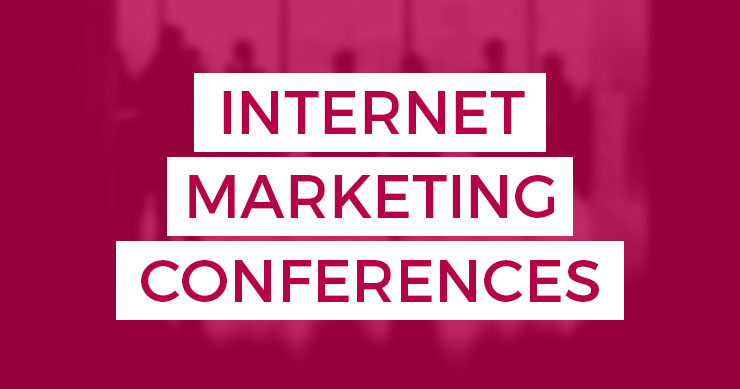 And we’re back in action. Did you read the morning keynote coverage already? Wasn’t it awesome. David Meerman Scott really rocked it, in my humble blogger opinion. Okay, up next we have Richard Zwicky moderating speakers Josh Cobb, Chris Boggs, Mark Knowles, and Lee Odden. That means I should probably stop rocking out to the music now. Lets do this thing.
And we’re back in action. Did you read the morning keynote coverage already? Wasn’t it awesome. David Meerman Scott really rocked it, in my humble blogger opinion. Okay, up next we have Richard Zwicky moderating speakers Josh Cobb, Chris Boggs, Mark Knowles, and Lee Odden. That means I should probably stop rocking out to the music now. Lets do this thing.
Up first is Mark Knowles.
A few years ago we all saw the search engine results page as just ten blue links. Then media start showing up and blended search was born. In 2003, Google filed its first patent on integrated search. Now if you search for [March Madness] (Poor Kansas), you’ll see that all the search engines are using mixed results, including images, videos, etc. If you search for [Bob Saget], you’ll see pictures, videos and news. [Mark says he’s not sure how Bog Sagat got into the news. OUCH! :)] The engines are looking to find ways to create a better experience for you.
Local business is a whole other realm. A search for a [New York deli] brings ups a map of local places. So does a search for [car repair]. It’s not just high tech queries that are getting these new additions.
Is this important? He asked the experts.
Bruce Clay said it had significant impact on what he was doing. Marshall Simmonds said it’s the New York Times’ rallying cry. Adam Audette says he now looks at the overall search landscape, not just the ten blue links. So yeah, it’s important. And it’s nothing to be afraid of.
All things Google are probably not good for us, he says. Google is a business. If Google goes offline for a minute, what are you going to do? You want to control your own supply line.
He uses Costco as an example. They had created a brand called Kirkland Signature. They noticed that when people went shopping for groceries, they showed up with a list and bought directly off of it. That list they were using came from recipes they had been handed. Now, before Thanksgiving, Coscto hands out a signature book that includes lots of Kirkland signature products which encourages people to buy their brand.
Mark says that Google is no different. They went out to the Internet, saw that Urchin was doing good things for people, and they bought it. They’re constantly buying up new products to improve things for users.
Should we be afraid of Google? He says no. They’re a business and every business needs to grow or die. There are things we can do to seize the changes and get on board quickly.
I’m confused. And he’s done. I, er, okay.
Next up is Chris Boggs.
Interactive marketers have dozens of choices for where to invest resources. What is the business value in optimized digital assets?
There’s no One Size Fits All approach here. Each of the major verticals have different opportunities and incentives to optimize for non-text content. The value of digital asset optimization goes beyond simply ranking for videos or images, etc.
You need to ask yourself:
- Do a lot of high performing Web sites in my vertical leverage non-text content prominently?
- Would my target segment (for some of them) benefit from Digital Assets, including video, images, podcasts, etc?
- Are there additional legal/compliance issues to be addressed?
- Do I have the funds to create and optimize content that may not be as easy to track to ROI as paid search or organic search
Some search phrases that have high volume lend themselves to additional tactics. You want to optimize content around everything. There’s lots of really valuable terms in a topic like health care.
[I just ran across the room to change seats. The projector I was closest to wasn’t doing a very good job displaying the PowerPoint slides so I couldn’t see any of what Chris was displaying. Seat fail and apologies to Chris (and you guys). We’re better now.]
Next up is Josh Cobb.
Josh says he’s never felt so recorded speaking before with all the people blogging and taking photos of him. Heh. No pressure, Josh. Noooo pressure at all. :)
Taking Inventory Of Your Digital Assets
- Identify them. Digital assets include content, functionality, online users, online awareness, perceived online value, size of ‘library’ and access to other digital assets.
- Sort them into: Commercial, Editorial, Entertainment, or Added Value.
- Align them to these constituencies: User Experience, Advertiser, Publisher
- Build and test your market assumptions, actual user behavior and technical limits
And regarding monetization: Think of ads as work for users. Ads organizes our thoughts in exchange for perceived or actual value that users expect you to deliver.
What to Deploy?
Typical profiles include:
- Long term, deeply engaged loyal user base
- Highly transactional point of sale
- Pass through traffic ‘buy ’em and goodbye ’em’. [ooo, it’s like dating!]
When Should We Deploy?
Conventional wisdom: Deploy everything and see what works. The problem with this is that its fear-based, hard to measure, confusing and usually the sign of an ill-defined site.
Better: Deploy when a clear user value has been determined, when there’s a source of funding and when you have control over the content. The better you know what your users want, the less threatening ads are to building long term user loyalty.
How do you know if its working
- AB Testing
- Specific Goals
- Proper Rotation of Users
- Statistical & Temporal relevance
- Isolated
- Specific Begin/End
- Specific Owners/Rollback
You need to make sure you’re measuring results off the baseline. Use third-party analytics packages, internal/custom data analytics tools from Excel to MS SGL to SAS. Invest in trusted, knowledgeable analytics staff.
Key Metrics
- Revenue
- Session length
- CTR of all content
- Return Users
- Whole page yield
Optimization is a data driven analysis, testing and customization of publisher implementation to maximize revenue and improved user experience.
Last up is Lee Odden. I’m not going to lie. I have a bit of a crush on Lee. He’s super dreamy in that “he looks like the world’s greatest dad” kind of way. He’s a classy guy. Okay, I’m done embarrassing myself now.
In 2010, the search landscape is a bit different than it was in the blended search days of 2007. We still have news, images, video, local, etc and all those sorts of things. But now we have social search, personalized search and real-time search. We also have to really think about mobile search.
If it can be searched on, it can be optimized for better performance. It doesn’t matter if you’re searching on your computer, your phone or your refridgerator.
DOA Content Strategy
- Keywords: Leverage social keyword research. Social conversations drive search so its important to know what keywords or conversations they’re talking about. Do your keyword research traditionally and through social channels.
- Personas: You have to understand your target audience. Who are they? What are they looking for? Where are they in their buying cycle? This is will tell you what they need in terms of content.
- SERPs: Understand what’s showing up on the queries you’re going after. What is the opportunity for you?
- Assets: What do you have? What’s available to you that’s already online? What’s offline?
- Editorial: Create a content plan.
- Mapping: Map the keywords to the content. Standard SEO but with digital assets.
- Operationalize: Make it part of your process.
- Off-page DAO: You can put a video on your site, but make sure your distributing it off your site as well. Use sites like TubeMogul.
- Promote: Use RSS, etc. Make sure you’re getting your content out there and encourage others to pass it along.
- Measure: Look at social media monitoring metrics on the front end and on the back end.
They like putting blogs at the center of their social strategy because they work well with other social sites.
Holistic SEO in Action
- Goal: Build keyword authority, leads
- Keyword: ‘social media marketing
- Buyer Persona: Fortune 1,000 Corp Marketers
- SERP: Web pages, blog posts
- Assets: Blog posts, images
- Off page: Flickr, StumbleUpon, etc
What did they do? They conducted 25 interviews with social media experts and broke them out into targeted blog posts.
And we’re out. I have to go charge my laptop before the next session. Youch!

